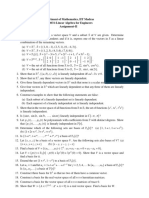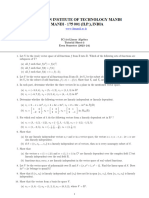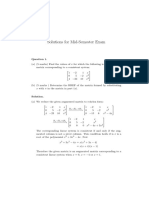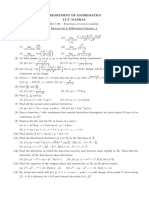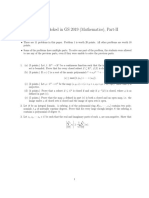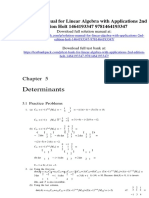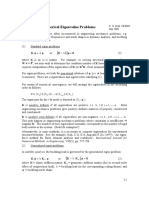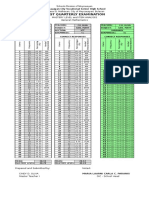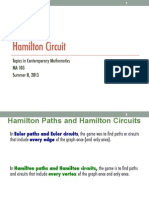0% found this document useful (0 votes)
225 views3 pagesProblemSet 01
This document contains 28 problems related to vector spaces and linear algebra concepts such as subspaces, linear independence, bases and dimensions. Some of the problems ask the reader to determine if given sets are subspaces, find bases, or check for linear independence. Others involve proving properties of subspaces, finding dimensions, or expressing vectors as linear combinations. The problems cover a wide range of concepts involving vector spaces over fields.
Uploaded by
Soumya Ranjan SahooCopyright
© © All Rights Reserved
We take content rights seriously. If you suspect this is your content, claim it here.
Available Formats
Download as PDF, TXT or read online on Scribd
0% found this document useful (0 votes)
225 views3 pagesProblemSet 01
This document contains 28 problems related to vector spaces and linear algebra concepts such as subspaces, linear independence, bases and dimensions. Some of the problems ask the reader to determine if given sets are subspaces, find bases, or check for linear independence. Others involve proving properties of subspaces, finding dimensions, or expressing vectors as linear combinations. The problems cover a wide range of concepts involving vector spaces over fields.
Uploaded by
Soumya Ranjan SahooCopyright
© © All Rights Reserved
We take content rights seriously. If you suspect this is your content, claim it here.
Available Formats
Download as PDF, TXT or read online on Scribd
/ 3








